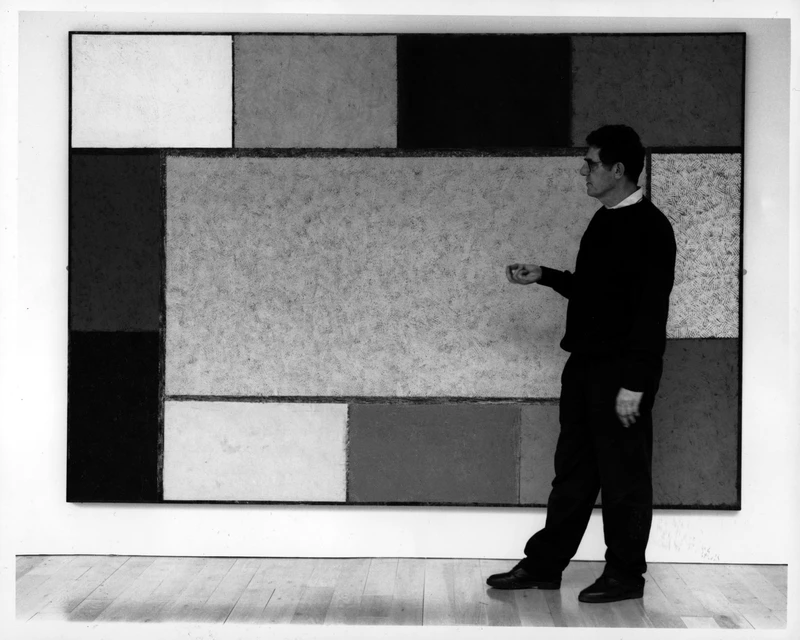Alan Green: A Survey
31 Mar-7 May 2022
PV 31 Mar 2022, 6-8pm


Annely Juda Fine Art is pleased to present an exhibition of paintings by Alan Green (1932 – 2003). The exhibition will offer a broad view of Green’s work, charting the vitality and evolution of his paintings from the early block paintings such as ‘Happy Christmas’ of 1972 through to the minimal and multi-part canvas works, the horizontal paintings and to the last disc works such as ‘Red Over White’ of 2001. This comprehensive exhibition will comprise of over 25 paintings and will be spread over two floors of the gallery.
Alan Green is one of the great British abstract artists whose formative years were spent in London in the 1960’s, having studied at Beckenham School of Art and The Royal College of Art (in between which he served two years national service in Korea). By the mid–1960’s, in response perhaps to the influence of American abstract painting, Green began working on colour field paintings in which paint and its application dictated the form. He intended his paintings to function in two ways; as a two-dimensional pictorial space as well as a three-dimensional material object in real space. Green’s structured, painterly surfaces register changes in movement, colour and light revealed through the layers of their making.
Annely and David Juda enjoyed a close and lifelong relationship with Green from his early days as an emerging artist and throughout his career. Over five decades the gallery has held some thirteen one man shows of his paintings. Following his death in 2003, Annely Juda Fine Art has continued to exhibit and represent Green in close collaboration with the artist’s wife, June Green, and in 2008 presented a posthumous exhibition celebrating his work for which June wrote the catalogue essay. Her words remain so pertinent and insightful in capturing the essence of Green as the consummate, intelligent artist of great integrity and conviction he was, and we are reprinting them in this 2022 exhibition catalogue. Referring to Green’s preference for writing his own catalogue texts from 1990 onwards, she wrote
“He wanted the description of his work to be factual and tangible; that was the way he wanted the viewer to approach it. The physicality of the painting as object was important. It was a requisite he shared with Jasper Johns, aspects of whose work he found stimulating. But for Alan Green the qualities inherent in painting itself were vital. He wanted his work to be such that the viewer would ‘look and go on looking’ but, in the process of their making, the paintings would have reached a point ‘when what holds them together and makes them alive is a tangible thing but… so constructed that the tangible has become intangible.’”
What is clear in all of Green’s canvases is his passion for the physical act of painting, his love of paint and materials and his absolute conviction to the autonomy of painting. This came from his belief that, in the second half of the twentieth century, artists were too self-conscious to be able to experience “real things” freely. Alongside his paintings, Green also made exquisite drawings on paper and etchings, similarly relying on colour and process to form the image.
Green held teaching posts at Hornsey College of Art, Leeds Polytechnic and Ravensbourne College of Art. His works are represented in major public collections in the UK including the Tate Gallery, Leeds City Art Gallery, British Council, British Museum, Leeds City Art Gallery and throughout Europe and the rest of the world notably Ulster Museum, Belfast, Musee d'Art Moderne, Brussels Amsterdam Kunstmuseum, Kunstmuseum Dusseldorf, Kunstmuseum Hannover mit Sammlung Sprengel, Albright Knox Art Gallery, Buffalo, MOMA New York, Tel Aviv Museum, Israel, National Museum of Art Tokyo, Metropolitan Art Museum Osaka, Australian National Gallery, Canberra.